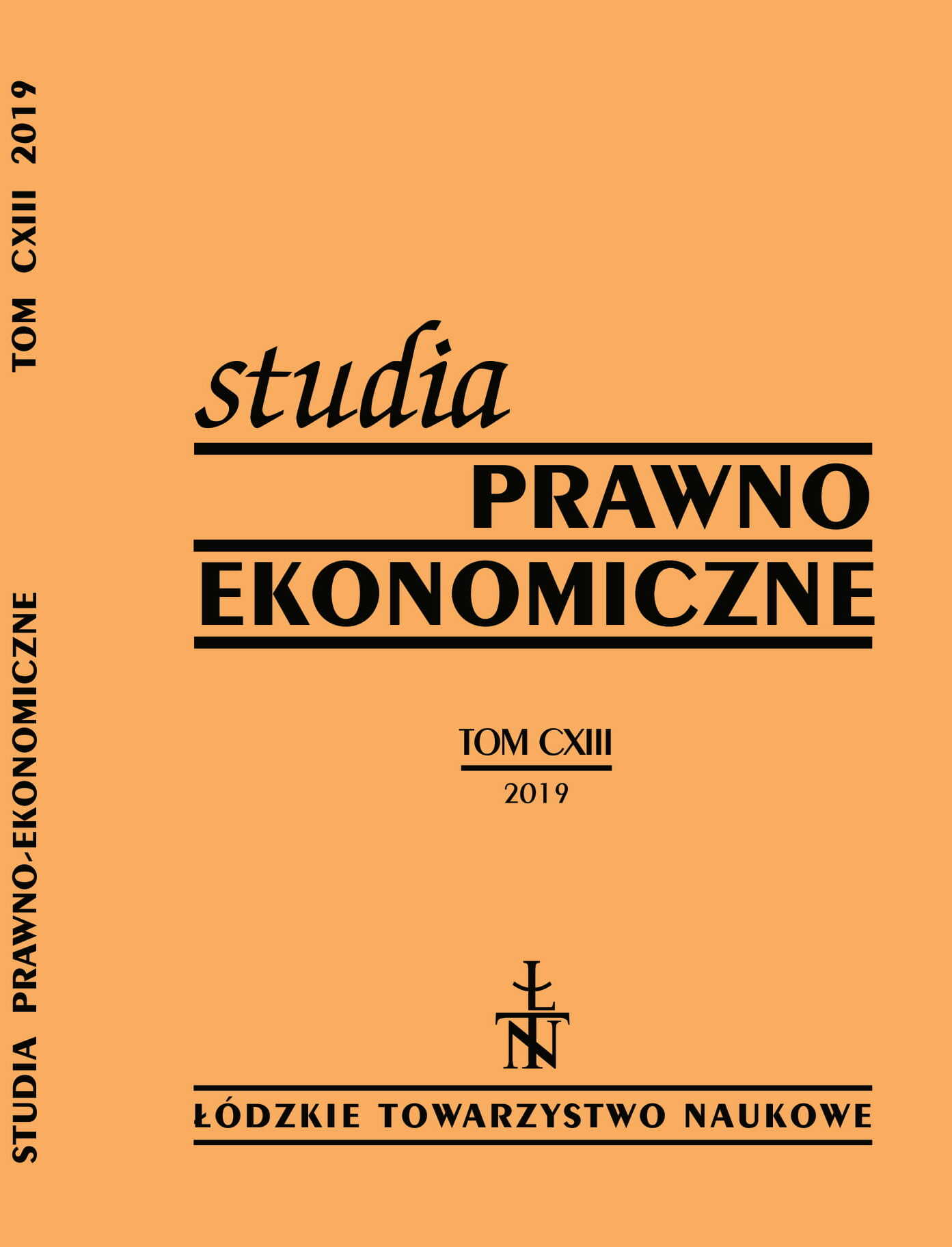The impact of exchange rate policy on inflation in Vietnam in 2008 and 2011
DOI:
https://doi.org/10.26485/SPE/2019/113/12Keywords:
exchange rate policy, inflation, VietnamAbstract
Background: The subject of the study is the changes in the exchange rate policy conducted by the State Bank of Vietnam in 2008 and 2011 in response to the movement of foreign capital during this period.
Research purpose: The aim of this paper was to describe the exchange rate policy and to analyze its changes, which resulted in a differentiation of the impact of exchange rate fluctuations on inflation in Vietnam in 2008 and 2011.
Methods: The article reviews the literature on exchange rate and exchange rate policy. The analysis was based on data from secondary sources, including reports, publications, and studies – mainly from the Vietnamese literature.
Conclusions: The research showed that one of the reasons for unusually high inflation in Vietnam in the years under consideration was an excessive increase in the amount of the exchange rate policy pursued by the State Bank of Vietnam (BPW). However, the reasons for this phenomenon vary in particular years, namely: in 2008 it was the intervention of the Vietnamese State Bank to keep the exchange rate at a fixed level, while in 2011 – the devaluation of the Vietnamese currency.
Downloads
References
Art. 30 Rozporządzenia nr 28/2005/PL-UBTVQH11 Stałego Komitetu Zgromadzenia Narodowego Wietnamu z dnia 13 grudnia 2015 r. w sprawie kursów walutowych, Portal internetowy Rządu Wietnamskiego, http://vanban.chinhphu.vn/portal/page/portal/chinhphu/ hethongvanban?class_id=1&mode=detail&document_id=55835; stan na 30.10.2017 r.
Kodeks Cywilny nr 33/2005/QH11 Wietnamu, art. 476, strona internetowa Ministerstwa Spra¬wiedliwości Wietnamu, http://moj.gov.vn/vbpq/lists/vn%20bn%20php%20lut/view_detail. aspx?itemid=18147; stan na 30.01.2018 r.
Antoszewski Michał, Funkcjonowanie kanału kursowego oraz siła efektu pass-through w gospodarkach wschodzących: przypadek Polski, Czech i Węgier, Bank i Kredyt 2014.
Ito Takatoshi, Sato Kiyotaka, Exchange rate changes and inflation in post-crisis Asian eco¬nomies: VAR analysis of the exchange rate pass-through, Working Paper Series, 12395, NBER, Cambridge, 2008, w: Michał Antoszewski, Funkcjonowanie kanału kursowego oraz siła efektu pass-through w gospodarkach wschodzących: przypadek Polski, Czech i Węgier, Bank i Kredyt 2014.
Lạm phát 2011: Nhận diện và giải pháp, Vietnam Economic Times, strona Wietnamskiego Sto-warzyszenia Ekonomicznego, http://vneconomy.vn/thoi-su/lam-phat-2011-nhan-dien-va-giai-phap-20110506020359803.htm; stan na 30.10.2017 r.
Nguyen An Luong, Một số nhìn nhận về nguyên nhân lạm phát ở Việt Nam, BPW, https:// thongtinphapluatdansu.edu.vn/2008/05/09/1314/; stan na 30.01.2018 r.
Nguyen Duc Long, Điều hành tỷ giá năm 2016 (số 1-2/2017), BPW, https://www.sbv.gov.vn/ webcenter/portal/vi/links/cm195?dDocName=SBV286862; stan na 1.11.2017 r.
Nguyen Tu Anh, Công cụ chính sách tiền tệ trong kiềm chế lạm phát, BPW, https://www.sbv.gov. vn/webcenter/portal/vi/links/cm195?dDocName=SBV287794; stan na 30.01.2018 r.
Nojszewska Ewelina, Podstawy ekonomii, Wydawnictwa Szkolne i Pedagogiczne, Warszawa 2010.
Pham The Anh, Ứng dụng mô hình SVAR trong phân tích hiệu ứng chuyển của tỷ giá hối đoái ở Việt Nam, Kinh tế & Phát triển 2015/220.
Płynny kurs walutowy, Portal Edukacji Ekonomicznej NBP, https://www.nbportal.pl/slownik/ pozycje-slownika/plynny-kurs-walutowy; stan na 29.12.2017 r.
Polityka kursu walutowego, Portal Edukacji Ekonomicznej NBP. https://www.nbportal.pl/slow nik/pozycje-slownika/polityka-kursu-walutowego; stan na 28.12.2017 r.
Tình hình xuất khẩu, nhập khẩu hàng hóa của Việt Nam tháng 12 và 12 tháng năm 2016, Główny Urząd Ceł Wietnamu, https://www.customs.gov.vn/Lists/ThongKeHaiQuan/ViewDetails. aspx?ID=1038&Category =Ph; stan na 30.10.2017 r.
Truong Minh Cuong, Lạm phát: Tiền tệ có là nguyên nhân duy nhất?, Vietnam Economic Times, strona Wietnamskiego Stowarzyszenia Ekonomicznego, http://vneconomy.vn/tai-chinh/ lam-phat-tien-te-co-la-nguyen-nhan-duy-nhat-61910.htm; stan na 30.01.2018 r.
Tymoczko Izabela D., Analiza porównawcza systemów kursu walutowego, Zeszyt nr 287, Mate¬riały i studia NBP, Warszawa 2013, s. 11, https://www.nbp.pl/publikacje/materialy_i_studia/ ms287.pdf; stan na 22.12.2017 r.
Viet Nam and the WTO, Światowa Organizacja Handlu, https://www.wto.org/english/thewto_e/countries_e/vietnam_e.htm; stan na 30.10.2017 r.
Widła Izabela, Tracz Klaudia, Polityka kursu walutowego, https://mfiles.pl/pl/index.php/Polityka_kursu_walutowego; stan na 27.12.2017 r.
Włudyka Tadeusz, Smaga Marcin, Instytucje gospodarki rynkowej, Wolters Kluwer, Warszawa 2015.
https://data.worldbank.org/indicator/NY.GDP.MKTP.CD?locations=VN; stan na 29.01.2018 r.
https://thongtinphapluatdansu.edu.vn/2008/07/08/070820081/; stan na 20.01.2018 r.
https://www.ceicdata.com/en/indicator/vietnam/foreign-exchange-reserves; stan na 12.02.2018 r.
https://www.gso.gov.vn/; stan na 30.01.2018 r.



